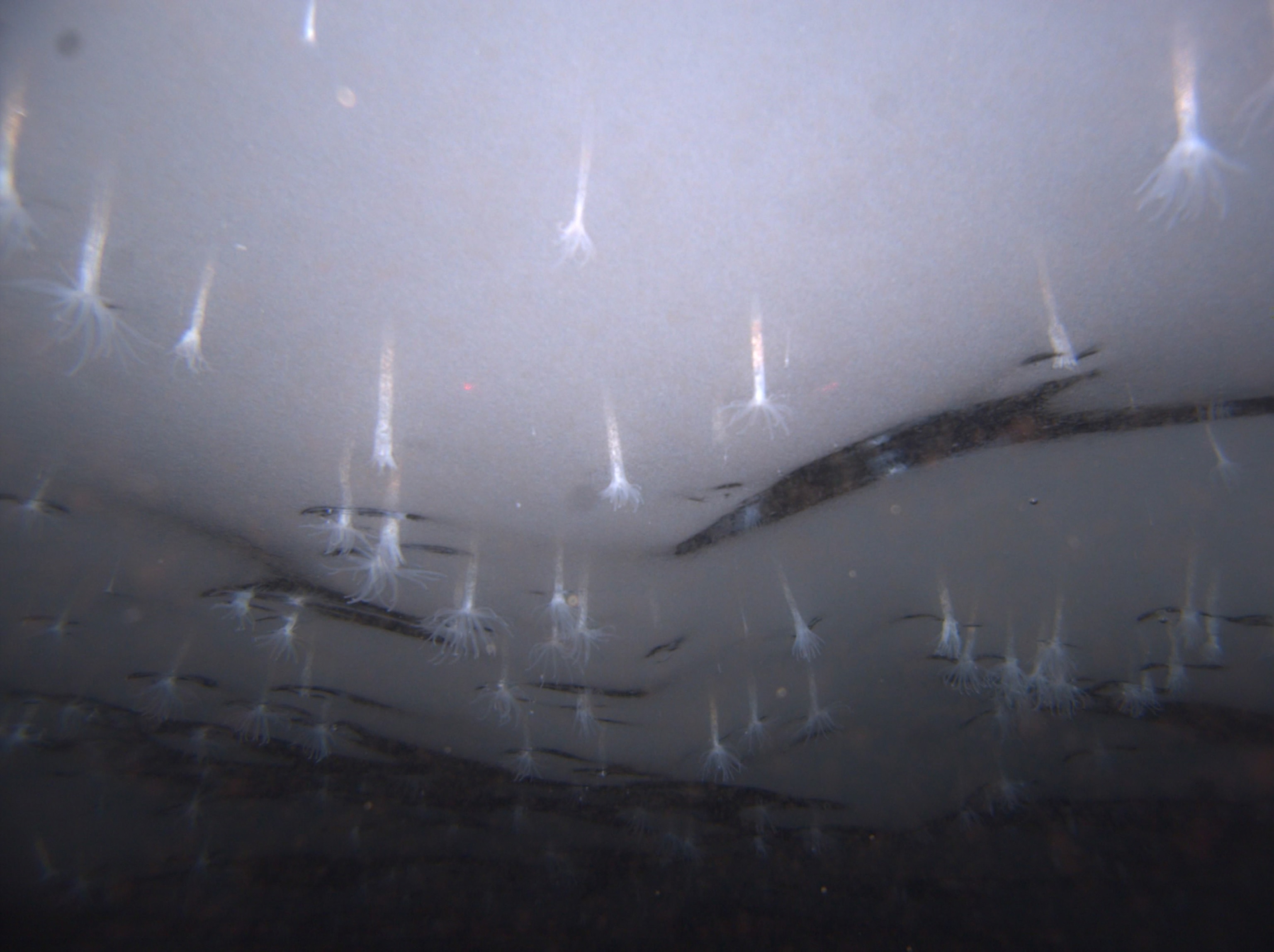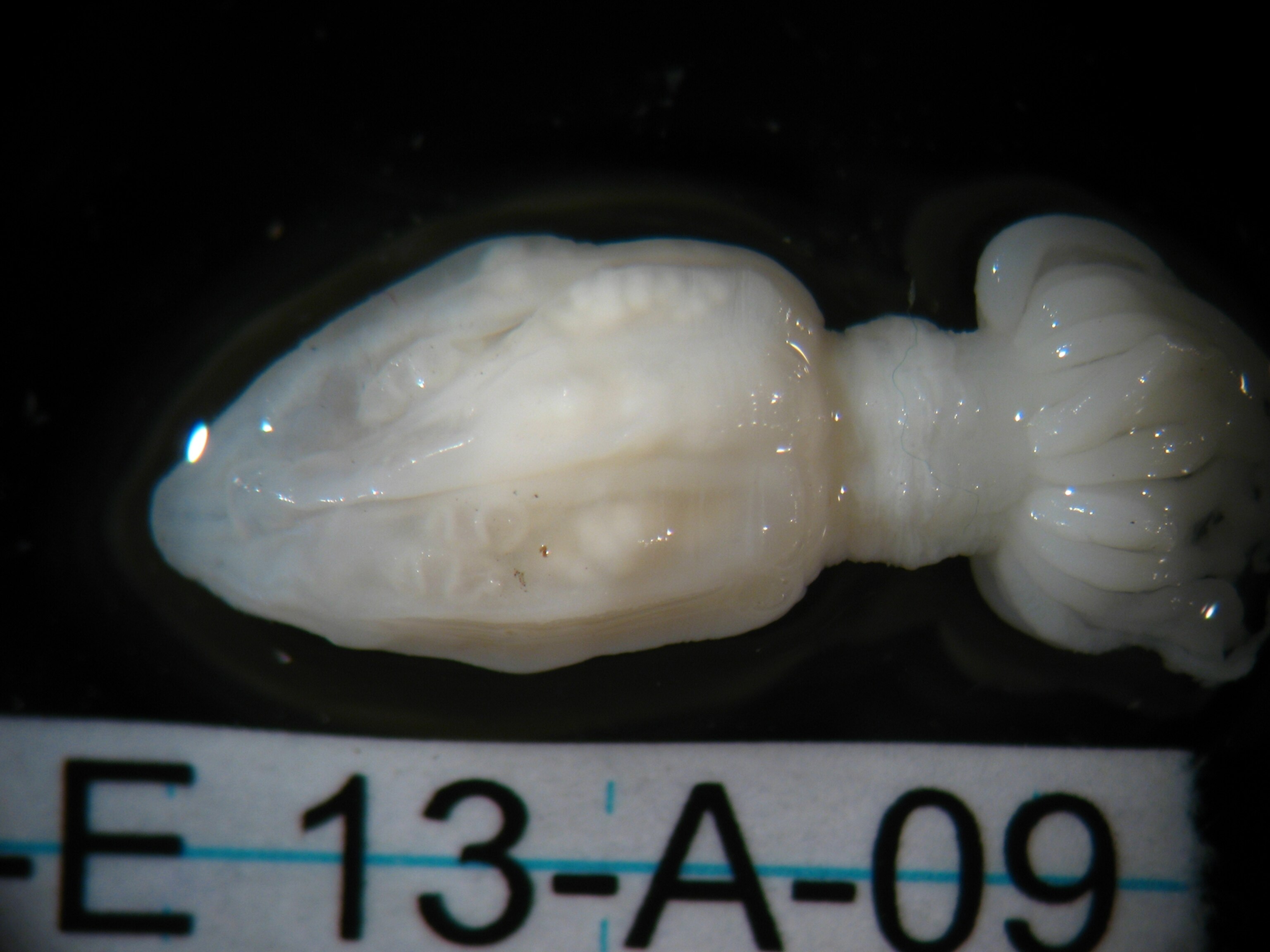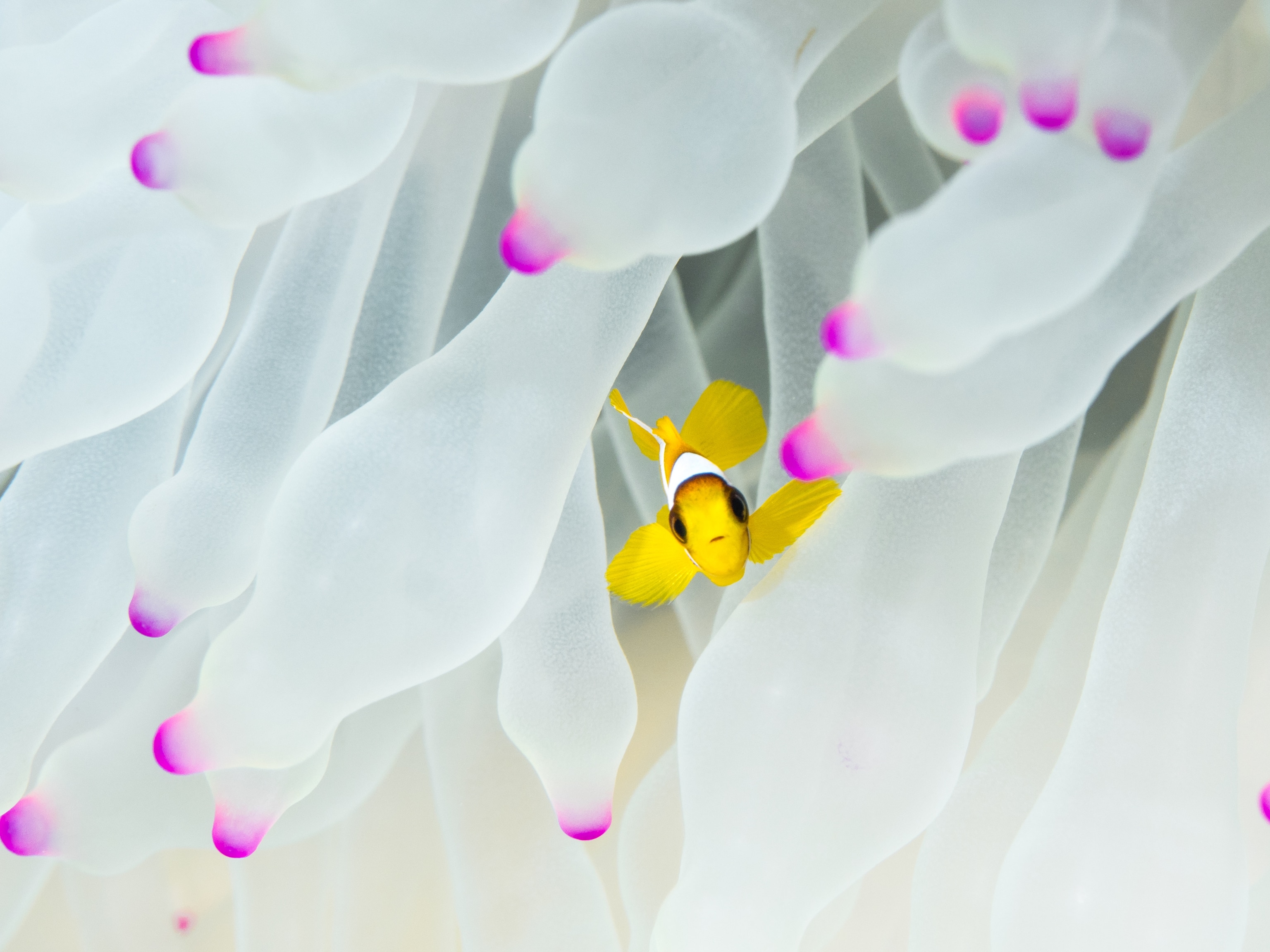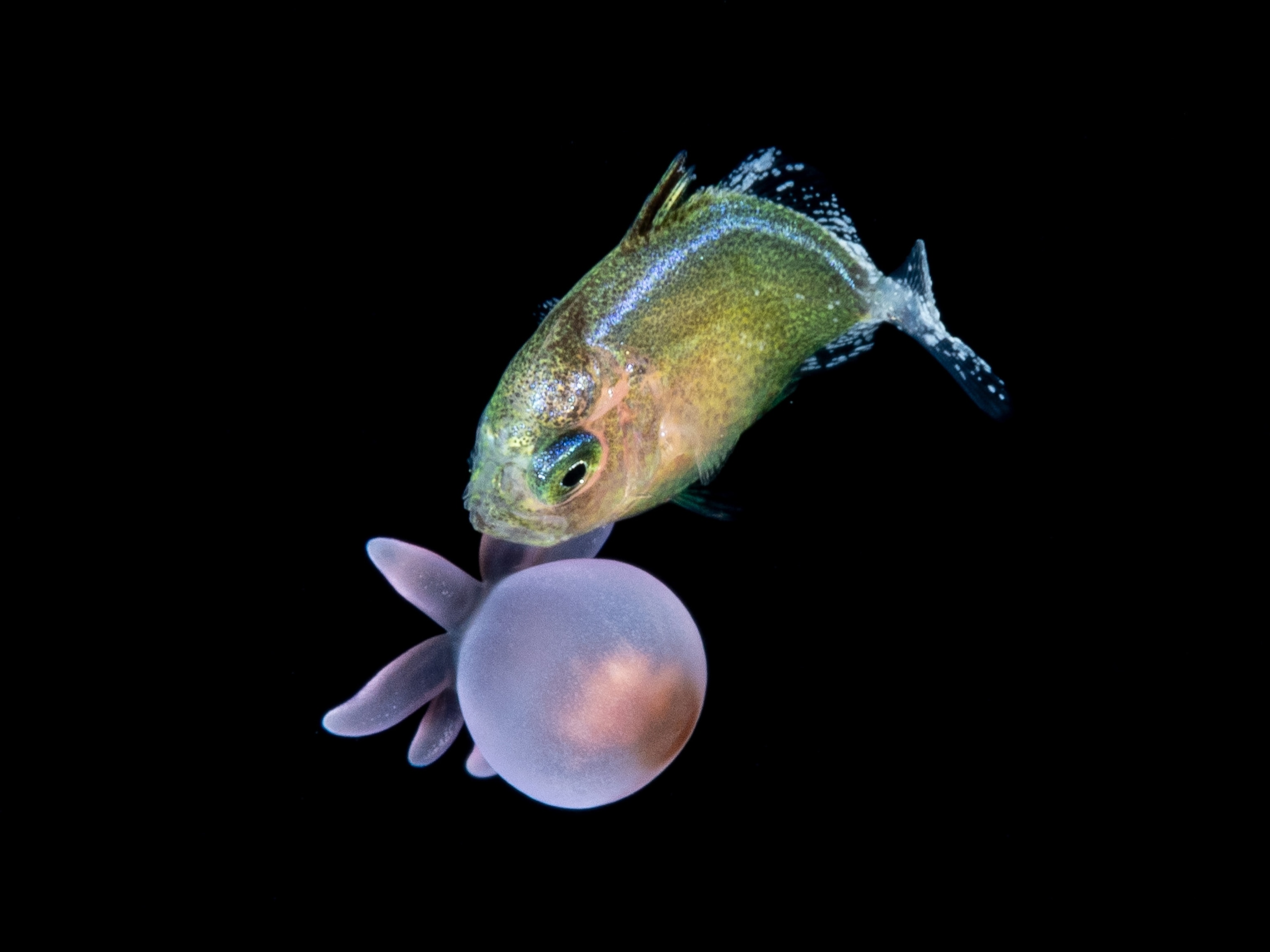
First Known Sea Anemone Found That Lives Upside Down in Sea Ice
Delicate-looking creatures burrow into the bottom of sea ice in the Antarctic.
Where else would a species that spends its life upside down live but in the Southern Hemisphere? The newly discovered Antarctic sea anemone resides in burrows dug into the bottom of sea ice in the Ross Sea, where it lives a mysterious existence.
The discoverers are unsure of what it eats, how it reproduces, or even how the anemone—an opaque-white creature with a stringy body topped by delicate-looking tentacles—excavates its burrows. But they are sure that it's a species new to science, and they describe it in a recently published study in the journal PLOS ONE.
The study authors, led by Ohio State's Marymegan Daly, also write that the new species is the first anemone found to live in sea ice, rather than stuck to hard surfaces like rocks or reefs. The find points to the hardiness and variety of life, even under the frigid ice shelves of Antarctica.
Discovery of the new anemone, dubbed Edwardsiella andrillae, came by accident during environmental surveys intended to test underwater equipment, including a remotely operated vehicle (ROV), said study co-author Frank Rack, a marine geologist at the University of Nebraska-Lincoln.
The ROV that Rack and his colleagues wanted to test is rated to a depth of 984 feet (300 meters). It had traveled through ice a couple of meters thick before, said Rack, but the area they were in had ice up to 853 feet (260 meters) thick.
ROV pilots wanted to make sure the vehicle could maneuver properly and control its buoyancy under that much ice before Rack and colleagues used it for a future seafloor drilling project. (Explore Antarctica with an interactive map.)
That's when the discovery came.
Fuzzy Ice
A camera on a rope dropped down the hole Rack and colleagues had drilled through the ice revealed a "flat, uninteresting" surface, he said. "But when we went down with the ROV and its camera systems, the [underside of the] ice looked fuzzy."
Upon closer inspection, the researchers saw tentacles sticking out of the ice. "As the [ROV] approached the anemones, they would pull back into their hole," Rack recalled. "It was amazing."
Although Rack and colleagues aren't biologists, "we knew what we had stumbled on and it was very cool," Rack said.
Bad weather prevented staff at the nearby McMurdo Station from sending collecting supplies out to the ROV testing group. (See "South Pole Expeditions Then and Now: How Does Their Food and Gear Compare?")
But they were able to jury-rig a vacuum tube out of a spare ROV thruster and a coffee filter to suck up 20 to 30 anemones.
Many of the animals clung tenaciously to their frigid homes, so researchers had to stun them with some warm water before they could collect the invertebrates.
Rack and colleagues were unable to properly preserve the animals for DNA analysis. But with sea anemones, DNA is not always definitive when identifying species, Rack said. "The taxonomy [or physical characteristics] is what's really needed for species identification."

The opaque anemones ranged from 0.63 to 0.79 inches (16 to 20 millimeters) in length. And they appeared to glow an orange color when illuminated by the ROV's lights, said Rack. But he's unsure if that glow is due to the food the animals eat, or if they themselves are generating it.
A New Perspective
The pilots were able to do all this while flying their ROV upside down. Normally used for seafloor surveys, the underwater robot came equipped with two cameras—one facing down and a second facing forward.
The only way to document the anemones, along with other organisms on the underside of the ice like small crustaceans and fish that swim upside down, was to fly the vehicle with the cameras pointing at the bottom of the sea ice.
Rack and colleagues are in the midst of writing another grant proposal to the U.S. National Science Foundation to go back, this time with a group of biologists. Rack hopes to kill two birds with one trip: completing his drilling project and getting more information about this new species of sea anemone.
Follow Jane J. Lee on Twitter.





